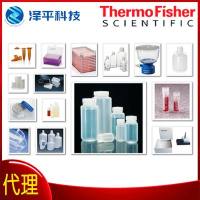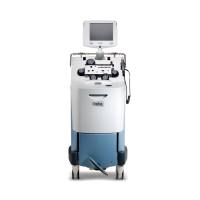Identification of Peptide Features in Precursor Spectra Using Hardklör and Krönik
互联网
- Abstract
- Table of Contents
- Figures
- Literature Cited
Abstract
Hardklör and Krönik are software tools for feature detection and data reduction of high?resolution mass spectra. Hardklör is used to reduce peptide isotope distributions to a single monoisotopic mass and charge state, and can deconvolve overlapping peptide isotope distributions. Krönik filters, validates, and summarizes peptide features identified with Hardklör from data obtained during liquid chromatography mass spectrometry (LC?MS). Both software tools contain a simple user interface and can be run from nearly any desktop computer. These tools are freely available from http://proteome.gs.washington.edu/software/hardklor. Curr. Protoc. Bioinform. 37:13.18.1?13.18.13. © 2012 by John Wiley & Sons, Inc.
Keywords: proteomics; mass spectrometry; liquid chromatography; high resolution; feature detection; deisotoping; peptide isotope distribution
Table of Contents
- Introduction
- Basic Protocol 1: Identifying Peptide Features in Precursor Spectra Using Hardklör
- Alternate Protocol 1: Identifying Features in High‐Resolution MS/MS Spectra Using Hardklör
- Basic Protocol 2: Visualizing Hardklör Results Using HKViewer and Performing Additional Analysis Using Krönik
- Support Protocol 1: Installing Hardklör and Krönik
- Guidelines for Understanding Results
- Commentary
- Literature Cited
- Figures
- Tables
Materials
Figures
-

Figure 13.18.1 Image of the Hardklör user interface. View Image -

Figure 13.18.2 Sample of Hardklör output. The output is in tab‐delimited ASCII text. Each line is labeled as either spectrum (S) information or peptide feature (P) information. Details of the output file contents can be found on the Hardklör Web site at: http://proteome.gs.washington.edu/software/hardklor/tutorial.html#results. View Image -

Figure 13.18.3 The HKViewer. This Windows‐based graphical user interface presents Hardklör results to the user on a scan‐by‐scan basis using the navigation toolbar at the top left of the window. The graph in the upper right displays the distribution of peptide features identified with Hardklör across the input scan data. View Image -

Figure 13.18.4 Screen capture of Krönik results visualized with Microsoft Excel. View Image
Videos
Literature Cited
| Literature Cited | |
| Beausoleil, S.A., Villen, J., Gerber, S.A., Rush, J., and Gygi, S.P. 2006. A probability‐based approach for high‐throughput protein phosphorylation analysis and site localization. Nat. Biotechnol. 24:1285‐1292. | |
| Cox, J. and Mann, M. 2008. MaxQuant enables high peptide identification rates, individualized p.p.b.‐range mass accuracies and proteome‐wide protein quantification. Nat. Biotechnol. 26:1367‐1372. | |
| Du, P. and Angeletti, R.H. 2006. Automatic deconvolution of isotope‐resolved mass spectra using variable selection and quantized peptide mass distribution. Anal. Chem. 78:3385‐3392. | |
| Goodlett, D.R., Bruce, J.E., Anderson, G.A., Rist, B., Pasa‐Tolic, L., Fiehn, O., Smith, R.D., and Aebersold, R. 2000. Protein identification with a single accurate mass of a cysteine‐containing peptide and constrained database searching. Anal. Chem. 72:1112‐1118. | |
| Hoopmann, M.R., Finney, G.L., and MacCoss, M.J. 2007. High‐speed data reduction, feature detection, and MS/MS spectrum quality assessment of shotgun proteomics data sets using high‐resolution mass spectrometry. Anal. Chem. 79:5620‐5632. | |
| Hoopmann, M.R., Merrihew, G.E., von Haller, P.D., and Maccoss, M.J. 2009. Post analysis data acquisition for the iterative MS/MS sampling of proteomics mixtures. J. Proteome Res. 8:1870‐1875. | |
| Horn, D.M., Zubarev, R.A., and McLafferty, F.W. 2000. Automated reduction and interpretation of high resolution electrospray mass spectra of large molecules. J. Am. Soc. Mass Spectrom. 11:320‐332. | |
| Hsieh, E.J., Hoopmann, M.R., MacLean, B., and MacCoss, M.J. 2010. Comparison of database search strategies for high precursor mass accuracy MS/MS data. J. Proteome Res. 9:1138‐1143. | |
| Jaitly, N., Mayampurath, A., Littlefield, K., Adkins, J.N., Anderson, G.A., and Smith, R.D. 2009. Decon2LS: An open‐source software package for automated processing and visualization of high resolution mass spectrometry data. BMC Bioinformatics 10:87. | |
| Jedrychowski, M.P., Huttlin, E.L., Haas, W., Sowa, M.E., Rad, R., and Gygi, S.P. 2011. Evaluation of HCD‐ and CID‐type fragmentation within their respective detection platforms for murine phosphoproteomics. Mol. Cell Proteomics 10:M111.009910. | |
| Kaur, P. and O'Connor, P.B. 2006. Algorithms for automatic interpretation of high resolution mass spectra. J. Am. Soc. Mass Spectrom. 3:459‐468. | |
| Kubinyi, H. 1991. Calculation of isotope distributions in mass spectrometry. A trivial solution for a non‐trivial problem. Anal Chim. Acta 247:107‐119. | |
| Mann, M., Meng, C.K., and Fenn, J.B. 1989. Interpreting mass spectra of multiply charged ions. Anal. Chem. 61:1702‐1708. | |
| Nagaraj, N., D'Souza, R.C., Cox, J., Olsen, J.V., and Mann, M. 2010. Feasibility of large‐scale phosphoproteomics with higher energy collisional dissociation fragmentation. J. Proteome Res. 9:6786‐6794. | |
| Olsen, J.V., Schwartz, J.C., Griep‐Raming, J., Nielsen, M.L., Damoc, E., Denisov, E., Lange, O., Remes, P., Taylor, D., Splendore, M., Wouters, E.R., Senko, M., Makarov, A., Mann, M., and Horning, S. 2009. A dual pressure linear ion trap Orbitrap instrument with very high sequencing speed. Mol. Cell Proteomics 8:2759‐2769. | |
| Renard, B.Y., Kirchner, M., Steen, H., Steen, J.A., and Hamprecht, F.A. 2008. NITPICK: Peak identification for mass spectrometry data. BMC Bioinformatics 9:355. | |
| Rockwood, A.L., Van Orden, S.L., and Smith, R.D. 1995. Rapid calculation of isotope distributions. Anal Chem. 67:2699‐2704. | |
| Senko, M.W., Beu, S.C., and McLafferty, F.W. 1995a. Automated assignment of charge states from resolved isotopic peaks for multiply charged ions. J. Am. Soc. Mass Spectrom. 6:52‐56. | |
| Senko, M.W., Beu, S.C., and McLafferty, F.W. 1995b. Determination of monoisotopic masses and ion populations for large biomolecules from resolved isotopic distributions. J. Am. Soc. Mass Spectrom. 6:229‐233. | |
| Shin, B., Jung, H.J., Hyung, S.W., Kim, H., Lee, D., Lee, C., Yu, M.H., and Lee, S.W. 2008. Postexperiment monoisotopic mass filtering and refinement (PE‐MMR) of tandem mass spectrometric data increases accuracy of peptide identification in LC/MS/MS. Mol. Cell Proteomics 7:1124‐1134. | |
| Yang, L., Vaitheesvaran, B., Hartil, K., Robinson, A.J., Hoopmann, M.R., Eng, J.K., Kurland, I.J., and Bruce, J.E. 2011. The fasted/fed mouse metabolic acetylome: n6‐acetylation differences suggest acetylation coordinates organ‐specific fuel switching. J. Proteome Res. 10:4134‐4149. | |
| Zelter, A., Hoopmann, M.R., Vernon, R., Baker, D., MacCoss, M.J., and Davis, T.N. 2010. Isotope signatures allow identification of chemically cross‐linked peptides by mass spectrometry: A novel method to determine interresidue distances in protein structures through cross‐linking. J. Proteome Res. 9:3583‐3589. | |
| Zhang, Z. and Marshall, A.G. 1998. A universal algorithm for fast and automated charge state deconvolution of electrospray mass‐to‐charge ratio spectra. J. Am. Soc. Mass Spectrom. 9:225‐233. |









